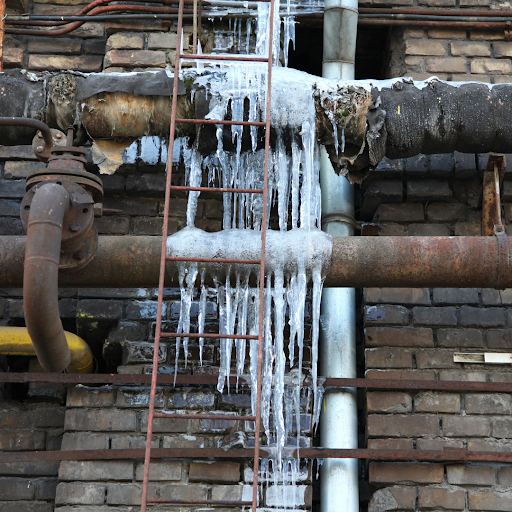Avoiding Frozen Pipes in Cold Weather: Expert Strategies
Avoiding Frozen Pipes in Cold Weather: Expert Strategies
Blog Article
Listed here on the next paragraphs yow will discover a lot of brilliant material regarding 6 Ways to Prevent Frozen Pipes.

Winter can wreak havoc on your plumbing, specifically by freezing pipes. Below's exactly how to stop it from occurring and what to do if it does.
Intro
As temperatures decline, the risk of icy pipelines boosts, potentially leading to expensive fixings and water damage. Recognizing exactly how to prevent frozen pipelines is essential for home owners in cold climates.
Avoidance Tips
Shielding vulnerable pipes
Cover pipelines in insulation sleeves or make use of heat tape to safeguard them from freezing temperature levels. Concentrate on pipelines in unheated or external locations of the home.
Home heating strategies
Keep interior spaces properly heated up, specifically locations with pipes. Open up cupboard doors to enable warm air to distribute around pipes under sinks.
How to identify frozen pipelines
Try to find reduced water circulation from taps, unusual odors or sounds from pipelines, and visible frost on exposed pipelines.
Long-Term Solutions
Architectural modifications
Consider rerouting pipelines far from exterior walls or unheated locations. Add added insulation to attic rooms, basements, and crawl spaces.
Updating insulation
Purchase top quality insulation for pipelines, attics, and walls. Appropriate insulation helps keep consistent temperature levels and decreases the threat of frozen pipelines.
Protecting Outside Pipes
Yard hoses and outside taps
Disconnect and drain pipes yard hoses prior to winter months. Install frost-proof spigots or cover exterior faucets with protected caps.
Recognizing Frozen Pipes
What triggers pipelines to ice up?
Pipelines freeze when exposed to temperatures below 32 ° F (0 ° C) for prolonged durations. As water inside the pipelines ices up, it broadens, taxing the pipeline wall surfaces and possibly creating them to break.
Threats and problems
Icy pipes can lead to supply of water interruptions, property damages, and pricey repair services. Ruptured pipes can flood homes and create substantial structural damages.
Signs of Frozen Pipes
Recognizing frozen pipes early can stop them from rupturing.
What to Do If Your Pipes Freeze
Immediate activities to take
If you think icy pipes, maintain taps available to relieve stress as the ice melts. Utilize a hairdryer or towels soaked in warm water to thaw pipelines slowly.
Verdict
Avoiding frozen pipelines requires positive measures and quick feedbacks. By comprehending the reasons, signs, and safety nets, homeowners can safeguard their pipes during winter.
6 Proven Ways to Prevent Frozen Pipes and Protect Your Home
Disconnect and Drain Garden Hoses
Before winter arrives, start by disconnecting your garden hoses and draining any remaining water. Close the shut-off valves that supply outdoor hose bibs and leave the outdoor faucet open to allow any residual water to drain. For extra protection, consider using faucet covers throughout the colder months. It’s also important to drain water from any sprinkler supply lines following the manufacturer’s directions.
Insulate Exposed Pipes
Insulating your pipes is an effective way to prevent freezing. Pipe insulation is readily available at home improvement stores and is relatively inexpensive. Pay close attention to pipes in unheated areas such as the attic, basement, crawl spaces, or garage. Apply foam insulation generously to create a buffer against the cold. You can also wrap your pipes in heat tape or thermostat-controlled heat cables for added warmth.
Seal Air Leaks
Inspect your home for any cracks or openings that could let in cold air. Seal any holes around the piping in interior or exterior walls, as well as the sill plates where your home rests on its foundation. Additionally, make sure to keep your garage door closed unless you’re entering or exiting. Leaving it open creates a significant air leak that can lead to frozen pipes.
Allow Warm Air Circulation
During cold snaps, it’s essential to allow warm air to circulate evenly throughout your home. Leave interior doors ajar to promote better airflow. Open kitchen and bathroom cabinets to help distribute heat consistently around the rooms. If you have small children or pets, be sure to remove any household chemicals or potentially harmful cleaners from open cabinets for safety.
Let Faucets Drip
A small trickle of water can make a big difference in preventing ice formation inside your pipes. When temperatures drop significantly, start a drip of water from all faucets served by exposed pipes. This continuous flow helps prevent the water from freezing. Additionally, running a few faucets slightly can relieve pressure inside the pipes, reducing the chances of a rupture if the water inside does freeze.
https://choateshvac.com/6-proven-ways-to-prevent-frozen-pipes-and-protect-your-home/

As an enthusiastic reader about Helpful Tips to Prevent Frozen Pipes this Winter, I imagined sharing that piece of content was essential. Be sure to take a moment to share this blog if you enjoyed reading it. We love reading our article about How to Prevent Your Pipes From Freezing.
Get A Quote Report this page